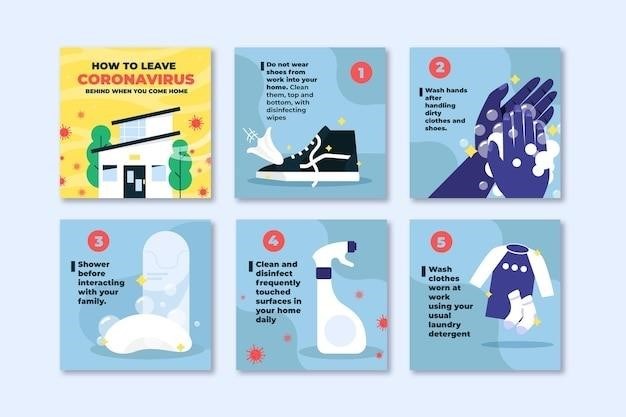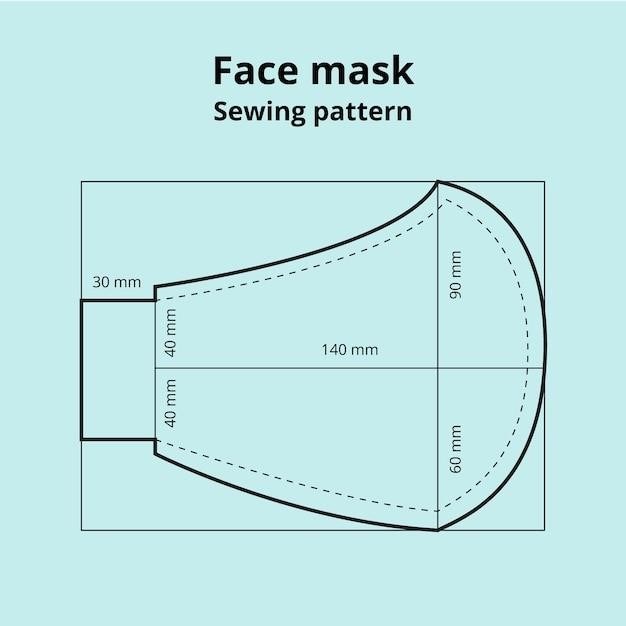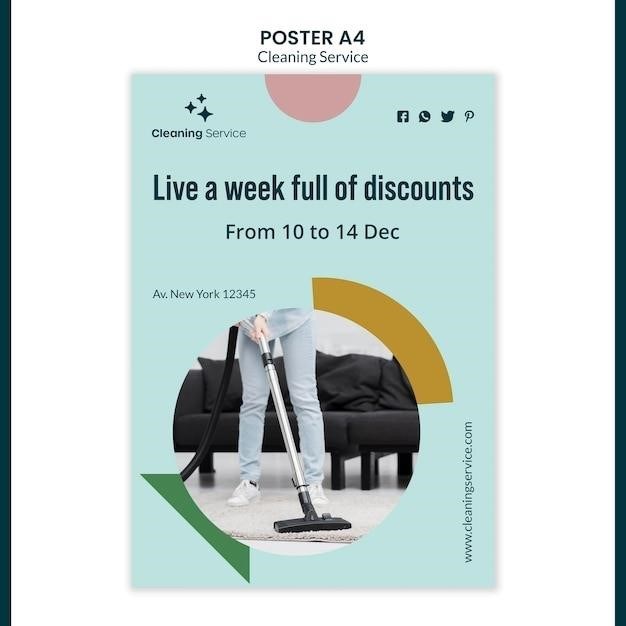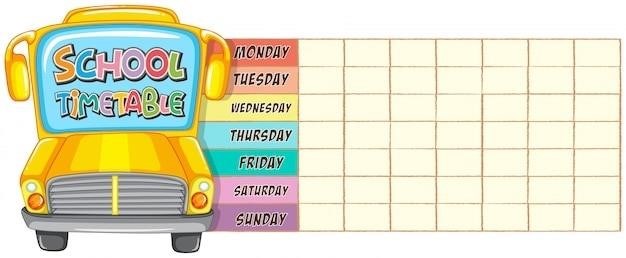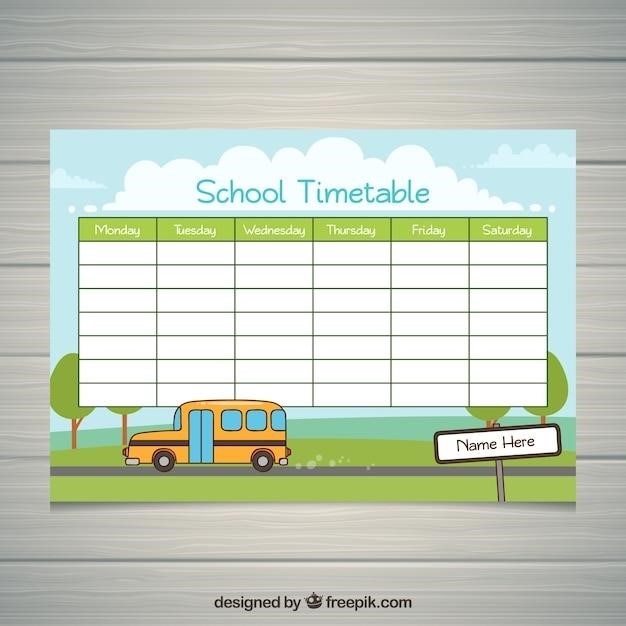The Zones of Regulation book is a comprehensive guide to understanding and managing emotions, behaviors, and social interactions. It provides practical strategies for self-regulation, enhancing emotional awareness and problem-solving skills, making it an essential resource for educators and parents.
1.1 What is the Zones of Regulation Framework?
The Zones of Regulation framework is a curriculum designed to help individuals manage their emotions, behaviors, and social interactions. It categorizes emotional states into four color-coded zones: blue (tired/sad), green (calm/happy), yellow (worried/upset), and red (angry/elated). This framework teaches self-awareness, self-regulation, and problem-solving skills, enabling individuals to identify their emotional state and apply strategies to maintain or change it. It is widely used in educational settings to support social-emotional learning and promote a positive classroom environment.
1.2 Purpose of the Zones of Regulation Book
The Zones of Regulation book serves as a practical guide to teaching self-regulation skills, helping individuals manage emotions, behaviors, and social interactions effectively. Its purpose is to provide educators, parents, and professionals with strategies to support individuals in recognizing and addressing their emotional states. The book offers a structured approach to fostering self-awareness, problem-solving, and self-control, making it an invaluable resource for promoting emotional and behavioral regulation in various settings. It includes activities, tools, and real-world applications to enhance learning and personal growth.

1.3 Overview of the Zones of Regulation PDF
The Zones of Regulation PDF is a comprehensive and organized digital resource designed to complement the book, offering easy access to its wealth of information. It serves as a practical guide for teaching self-regulation strategies, providing detailed frameworks and tools to help individuals manage their emotions and behaviors effectively. The PDF includes printable activities, visual aids, and structured lesson plans, making it an invaluable resource for educators, parents, and professionals. Its digital format allows for seamless integration into various learning environments, ensuring accessibility and convenience for those implementing the Zones of Regulation framework.

Key Concepts and Framework
The Zones of Regulation framework introduces a structured approach to emotional and behavioral regulation, emphasizing self-awareness, problem-solving, and strategies to manage emotions effectively in various situations.
2.1 The Four Zones Explained
The Zones of Regulation framework categorizes emotional states into four distinct zones: Blue (low energy, sad), Green (calm, ready to learn), Yellow (elevated emotions, caution), and Red (high energy, intense emotions); Each zone represents different emotional and behavioral states, providing a visual and structured way for individuals to identify and manage their emotions. This clear categorization helps in developing self-awareness and implementing appropriate strategies to regulate emotions effectively, leading to improved self-control and social interactions.

2.2 How the Zones Help in Self-Regulation
The Zones of Regulation framework helps individuals identify and manage their emotional states by categorizing feelings into four distinct zones. This visualization enables users to recognize when they are in a specific zone and employ strategies to regulate their emotions. By understanding their emotional state, individuals can take proactive steps to maintain or return to the Green Zone, where they are calm, focused, and ready to learn. This approach fosters self-awareness, self-control, and problem-solving skills, leading to improved emotional and behavioral regulation in various settings.
2.3 Connection Between Emotions and Behaviors
Emotions play a crucial role in shaping behaviors, and the Zones of Regulation framework highlights this connection by categorizing feelings into four distinct zones. Each zone corresponds to different emotional states, influencing how individuals act and react in various situations. For example, being in the Red Zone may lead to impulsive behaviors, while the Green Zone fosters calm and focused actions. By understanding this connection, individuals can identify triggers, manage their emotions, and develop strategies to regulate their behaviors effectively, leading to improved self-control and social interactions.
Implementation Strategies
Effective implementation involves creating zones-friendly environments, teaching the framework systematically, and integrating it into daily routines for consistent emotional regulation and behavior management.
3.1 Teaching the Zones of Regulation in Classrooms
Teaching the Zones of Regulation in classrooms involves introducing the four color-coded zones to help students identify and manage their emotions. Start with visual aids like posters or charts to explain each zone: blue (tired/sad), green (calm/happy), yellow (frustrated/worried), and red (angry/upset). Use role-playing activities to demonstrate how to recognize and transition between zones. Encourage group discussions to share strategies for self-regulation, such as deep breathing or counting. Incorporate the framework into daily routines, like morning check-ins or reflective journals, to reinforce emotional awareness and provide tools for managing behaviors effectively; Consistent practice and positive reinforcement are key to fostering a supportive classroom environment.
3.2 Creating a Zones-Friendly Environment
Creating a zones-friendly environment involves setting up spaces that support emotional regulation and self-awareness. Display visual reminders like posters or charts to reinforce the four zones. Designate areas for calm activities, such as a “blue zone” corner with cozy seating, or an “yellow zone” space for movement. Ensure access to tools like emotion cards, breathing exercises, or fidget toys. Encourage consistent routines, such as daily check-ins, to promote emotional awareness. Foster a positive atmosphere by praising students for identifying and managing their zones effectively. This environment helps students feel safe and supported in their emotional journeys.
3.3 Integrating the Framework into Daily Routines
Integrating the Zones of Regulation into daily routines helps students consistently practice self-regulation skills. Start with morning check-ins to identify students’ zones and discuss strategies for staying in the “green zone.” Incorporate zone-related discussions during transitions or after challenging activities. Use visual tools like zone charts or emotion cards to reinforce awareness. Encourage students to reflect on their zone shifts throughout the day. By embedding these practices into routines, students develop the habit of monitoring and managing their emotions, creating a smoother and more regulated learning environment.

Activities and Exercises
The Zones of Regulation offers engaging activities to teach emotional awareness. These include emotion identification games, role-playing scenarios, and reflective exercises to practice self-regulation strategies effectively.
4.1 Printable Zones of Regulation Activities
The Zones of Regulation book PDF offers a variety of printable activities designed to reinforce emotional regulation skills. These include emotion identification charts, self-reflection worksheets, and behavior strategy cards. Teachers and parents can use these resources to create interactive lessons that help individuals identify and manage their emotional states effectively. The activities are visually engaging and tailored for different age groups, making them adaptable for various learning environments.
Printable activities such as emotion sorting games and zone checklists provide hands-on practice for understanding and applying the Zones framework. They also encourage self-awareness, problem-solving, and communication skills, making them invaluable tools for both classrooms and homes.
4.2 Using the Zones of Regulation at Home
Implementing the Zones of Regulation at home helps parents guide children in managing emotions and behaviors. The framework provides tools like emotion identification charts and zone checklists, which can be posted in common areas as reminders. Families can discuss emotions during meals or before bed, fostering self-awareness. Parents can model zone strategies themselves, showing how to transition between zones calmly. Consistency and positive reinforcement are key to helping children generalize these skills outside the classroom, creating a supportive environment for emotional growth and regulation.
By integrating the Zones framework into daily routines, families can encourage self-control and problem-solving, strengthening relationships and reducing conflicts.

4.3 Tools and Resources for Effective Implementation
The Zones of Regulation offers a variety of tools to support effective implementation. Visual aids like posters and charts help students identify and manage their emotions. Activity cards and worksheets provide structured exercises for practicing self-regulation skills. Digital tools, such as apps and interactive games, engage students and reinforce learning. The Zones of Regulation book PDF includes reproducible pages for easy access to lesson plans and activities. Additional resources, such as the Zones Assessment Tools, help educators and parents track progress and tailor strategies to individual needs, ensuring a comprehensive approach to teaching emotional regulation.
Case Studies and Success Stories
Educators and parents share inspiring stories of how the Zones of Regulation framework transformed students’ emotional regulation, leading to improved classroom behavior and academic engagement.

5.1 Real-World Applications of the Zones Framework
The Zones of Regulation framework has been successfully implemented in various educational settings, helping students manage emotions and behaviors effectively. Teachers report improved classroom dynamics, reduced conflicts, and enhanced focus among students. Parents also apply the framework at home, fostering emotional stability and clearer communication. The framework’s practical tools, such as the Zones check-in system, make it accessible for educators and caregivers. By integrating these strategies into daily routines, the Zones framework promotes a supportive environment for social-emotional learning and personal growth, leading to positive outcomes in both academic and personal contexts;
5.2 Success Stories from Educators and Parents
Educators and parents have shared numerous success stories about the Zones of Regulation framework. Many teachers report improved classroom behavior, with students better managing emotions and resolving conflicts. Parents have seen reduced meltdowns at home, fostering calmer family interactions. One educator noted a significant decrease in disruptions, allowing for more focused learning. A parent shared how the framework helped her child identify and express emotions effectively. These testimonials highlight the framework’s practical benefits, demonstrating its positive impact on both academic and personal environments. The Zones of Regulation has proven to be a valuable tool for fostering emotional and social growth in diverse settings.
5.3 Impact on Student Self-Control and Problem-Solving
The Zones of Regulation framework has significantly enhanced students’ self-control and problem-solving abilities. By teaching emotional awareness, students learn to manage impulses and respond thoughtfully to challenges. This skill improvement fosters better decision-making and conflict resolution. Many students demonstrate increased patience and reduced reactive behaviors, leading to improved focus in class. The framework also encourages reflective thinking, helping students evaluate situations and choose appropriate responses. Enhanced self-control and problem-solving skills contribute to a more resilient and academically successful student population, creating a positive learning environment.

Digital Resources and Supplements
The Zones of Regulation offers a digital curriculum with interactive activities, visual aids, and downloadable resources. Companion guides provide additional strategies, while print materials support consistent implementation across settings.
6.1 The Zones of Regulation Digital Curriculum
The Zones of Regulation Digital Curriculum offers interactive activities, visual aids, and customizable tools to teach emotional regulation. It includes lesson plans, games, and exercises that align with the book’s concepts. Educators can access digital posters, checklists, and tracking sheets to support students’ progress. The curriculum is designed to be flexible, allowing integration into various classroom settings. It also provides resources for remote learning, making it accessible for diverse educational needs. This digital format enhances engagement and simplifies implementation for teachers and parents aiming to foster self-regulation skills in children.
6.2 Benefits of the PDF Version
The Zones of Regulation PDF version offers unparalleled accessibility and convenience. It allows users to easily access the entire book from any device, making it ideal for educators, parents, and professionals. The PDF format ensures that all visual aids, charts, and exercises are preserved in high quality. It is also cost-effective and environmentally friendly compared to physical copies. Additionally, the PDF can be shared easily among colleagues or within educational institutions, promoting widespread implementation of the framework. This digital format supports seamless integration into lesson plans and personal use, enhancing the practical application of the Zones of Regulation concepts.
6.3 Companion Guides and Print Materials
The Zones of Regulation book is complemented by a range of companion guides and print materials. These resources provide educators and parents with practical tools to reinforce the framework. Print materials include posters, charts, and worksheets that visually reinforce key concepts. Companion guides offer additional strategies for teaching self-regulation skills, catering to diverse learning needs. These materials are designed to be interactive and engaging, helping individuals apply the Zones framework in real-world situations. They enhance the learning experience, making the concepts more accessible and actionable for both children and adults.
The Role of the Zones of Regulation in Education
The Zones framework supports social-emotional learning, teaching students to manage emotions and behaviors, fostering a positive classroom environment for academic success and interpersonal growth.
7.1 Enhancing Self-Awareness and Self-Management
The Zones of Regulation framework empowers individuals to recognize and manage their emotional states effectively. By categorizing emotions into four zones—blue, green, yellow, and red—it provides a clear visual tool for self-awareness. This awareness is the foundation for self-management, enabling individuals to employ strategies like deep breathing or mindfulness to transition to the optimal “green zone.” Educators use the Zones of Regulation PDF to access activities that reinforce these skills, fostering a classroom environment where students can regulate their emotions and maintain focus, leading to improved academic performance and interpersonal relationships.
7.2 Supporting Social-Emotional Learning (SEL)
The Zones of Regulation framework is a powerful tool for fostering Social-Emotional Learning (SEL) by teaching students to identify, understand, and manage their emotions. It enhances skills like empathy, communication, and conflict resolution, which are critical for building positive relationships. By using the Zones of Regulation PDF, educators can integrate SEL into daily lessons, helping students develop self-awareness, self-regulation, and social awareness. This approach creates a supportive environment where students can navigate emotional challenges and collaborate effectively with peers, aligning with SEL goals and promoting holistic development.

7.3 Aligning with Educational Standards
The Zones of Regulation framework seamlessly aligns with educational standards by fostering essential social-emotional learning (SEL) competencies. It supports self-awareness, self-management, social awareness, relationship skills, and responsible decision-making, all of which are integral to academic success. By teaching students to identify and manage their emotions, the framework helps meet educational benchmarks focused on emotional intelligence and interpersonal skills. This alignment not only enhances students’ ability to regulate their behaviors but also promotes a conducive learning environment, ensuring that academic goals are met while nurturing emotional and social growth.
The Zones of Regulation framework effectively enhances emotional intelligence and self-regulation in education and beyond. Its adaptability ensures future growth and application across diverse settings, fostering social-emotional learning and personal development.
8.1 The Growing Popularity of the Zones Framework
The Zones of Regulation framework has gained widespread recognition for its practical approach to emotional regulation. Its simplicity and effectiveness in teaching self-management skills have made it a favorite among educators and parents. The framework’s ability to adapt to various settings, from classrooms to homes, has contributed to its rapid adoption. As more individuals experience its benefits, the Zones of Regulation continues to expand its reach, fostering emotional intelligence and behavioral stability across diverse communities.
8.2 Expanding the Zones of Regulation Community
The Zones of Regulation community is growing rapidly, with educators, parents, and professionals worldwide embracing the framework. Workshops, online forums, and collaborative projects are fostering connections among users. Schools and organizations are sharing success stories, inspiring others to adopt the approach. This collective effort is creating a supportive network, ensuring the framework reaches more individuals in need of emotional regulation tools. As the community expands, it strengthens the mission of helping people manage emotions and behaviors effectively.
8.3 Continuous Learning and Adaptation
Continuous learning and adaptation are key to maximizing the impact of the Zones of Regulation framework. Educators and professionals are encouraged to stay updated with the latest research and strategies through workshops, training, and online resources. By adapting the framework to meet diverse needs, users can ensure its effectiveness across different settings. Regular reflection and feedback loops help refine practices, fostering a culture of growth and improvement. This ongoing process ensures the Zones of Regulation remains a dynamic and relevant tool for supporting emotional and behavioral regulation in individuals of all ages.

Frequently Asked Questions (FAQs)
- What is the Zones of Regulation?
- How does the Zones framework help with emotional regulation?
- Can I use the Zones of Regulation at home with my child?
- Is the Zones of Regulation PDF suitable for all ages?
9.1 Common Questions About the Zones of Regulation
Many wonder how the Zones of Regulation helps with emotional control and if it’s suitable for all ages. Others ask about its effectiveness in classrooms versus home settings. Educators often inquire about how to integrate it into lesson plans, while parents seek ways to support their children’s emotional growth. The framework’s adaptability and practical strategies make it a popular choice for fostering self-awareness and self-management. However, some question its long-term impact and how to measure success. Overall, the Zones of Regulation is widely regarded as a valuable tool for emotional and behavioral development.
9.2 Misconceptions About the Framework
Some believe the Zones of Regulation is only for children with special needs, but it benefits all learners. Others think it restricts emotional expression, yet it teaches appropriate emotional responses. A common myth is that it’s a quick fix, while consistent practice is essential. Additionally, some assume it’s a standalone solution, but it works best alongside other SEL strategies. These misconceptions overlook the framework’s versatility and its focus on fostering self-awareness and self-regulation skills for long-term emotional well-being.
9.3 Tips for Effective Implementation
For successful implementation of the Zones of Regulation, consistency is key. Start with clear explanations and visual aids like posters or charts. Encourage students to identify and label their emotions regularly. Model the framework yourself to demonstrate its practical use. Differentiate instruction to meet varied learning needs, and gradually release responsibility to students. Integrate the framework into daily routines and pair it with other SEL strategies. Provide opportunities for practice, such as role-playing or reflection activities. Offer positive reinforcement and constructive feedback to support growth. Be patient, as developing self-regulation skills takes time and practice.


